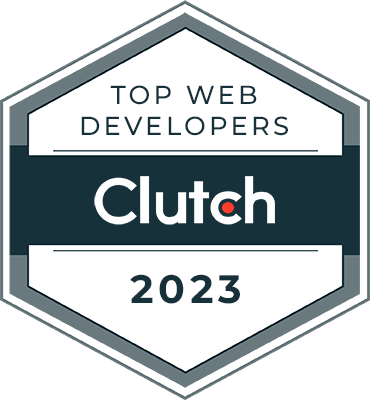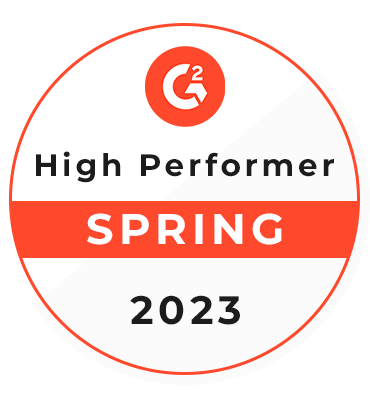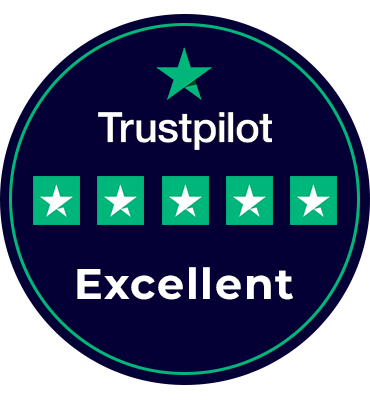How to Build an MVP Step by Step: A Complete Guide for Startups
Shyam Singh
Last Updated on: 04 November 2025
Minimum Viable Product (MVP) is the fastest, lowest-risk way to test a business idea, validate assumptions with real users, and attract early customers or investors. This guide walks you through everything — from what an MVP is, to the exact step-by-step process for building an MVP app or product for your business.
1. What is an MVP in software? (Minimum Viable Product)
An MVP (Minimum Viable Product) is the simplest working version of a product that allows you to:
- Deliver a core user benefit (solve one important problem).
- Collect real user feedback and usage data.
- Validate business assumptions before heavy investment.
An MVP is NOT a half-finished product — it should reliably perform a specific job for a specific user. It differs from a prototype (which is often non-functional or for design validation) and from a Proof of Concept (POC), which demonstrates technical feasibility. The MVP is a functional product you can put in user hands.
In software, an MVP often has a small set of features implemented end-to-end: frontend, backend, and basic data storage — enough to let users complete the core flow and give feedback.
2. Why build an MVP — benefits and goals
Building an MVP is a strategic approach that reduces risk and accelerates learning. Key benefits:
- Validate demand early: Test whether users pay attention to your idea before building a full product.
- Save time & money: Avoid building unnecessary features. Invest only in what proves valuable.
- Focus on core value: Forces clarity about the primary user problem and the simplest solution.
- Faster time to market: You can reach early adopters quickly and start learning from real usage.
- Investor traction: A working MVP is far more persuasive to investors than a PowerPoint.
- Data-driven product decisions: Real metrics guide your product roadmap instead of guesses.
The core goal of an MVP is to learn — not to be “perfect.” Keep that in mind: every feature you add should aim to answer an open hypothesis.
3. Types of MVPs — choose the right approach
There are several ways to implement an MVP depending on risk, timeline, and resources. Common types:
Landing page MVP
Create a simple landing page that explains your product and has a sign-up or pre-order CTA. Use it to measure interest (email captures, clicks, conversion).
Prototype / Clickable mockup
Design an interactive Figma/Adobe XD prototype that simulates flows. Great for validating UX and pitch demos.
Concierge MVP
Manually deliver the product behind the scenes (human-powered) while presenting a polished front to users. Ideal for high-touch services.
Wizard of Oz MVP
Users interact with a system that appears automated, but internal processes are manual. Useful when automation is costly but core user benefit needs testing.
Single-feature product
Ship one core feature very well. Example: a single landing page builder, not a full CMS.
Piecemeal MVP
Combine existing tools (Typeform, Zapier, Airtable) to deliver a working product quickly without heavy custom engineering.
4. MVP in business vs MVP in software — what's the difference?
The term MVP is used across business and software contexts, and the priorities shift slightly:
- Business MVP: Focuses on validating the business model, customer willingness to pay, distribution channels, and unit economics. It might use manual processes or off-the-shelf tools.
- Software MVP: Focuses on delivering a functional software product that validates user experience, feature assumptions, and technical feasibility.
Good MVP strategy blends both: validate business hypotheses (demand, pricing, channels) while delivering a minimal software product that creates value for users.
5. Step-by-step: How to build an MVP (detailed process)
The following steps form a repeatable framework. Treat each step as a clear milestone with deliverables and success criteria.
Step 0 — Start with a clear hypothesis
Write one or two crisp hypotheses you want to test. Example:
- “Busy parents will pay £5/month for meal planning that saves 30 minutes/day.”
- “Small retailers in City X will use a simple POS app if it integrates with their inventory.”
Hypotheses focus the MVP scope and guide what success looks like.
Step 1 — Research & validate the problem
Talk to potential users. Use surveys, one-on-one interviews, and competitor analysis. Key goals:
- Confirm the problem is real and painful.
- Understand who the real user is and their workflow.
- Identify solutions users currently use and their frustrations.
Deliverables: User persona(s), problem statement, competitive map.
Step 2 — Define the core value proposition
Condense the product promise into one sentence: “We help X do Y by doing Z”. This becomes the guiding star for feature selection.
Step 3 — Map user journeys and essential flows
Sketch out the end-to-end flow that would let a user realize the core value. Keep it minimal — remove any optional branches. Example core flows for an MVP app:
- Sign up → Create profile → Complete core task → Receive result
- Search → Select → Purchase → Confirm
Deliverable: User flow diagrams or simple wireframes.
Step 4 — Prioritise features (MoSCoW, RICE)
List all possible features then prioritise. Two simple approaches:
- MoSCoW: Must, Should, Could, Won’t
- RICE scoring: Reach × Impact × Confidence ÷ Effort (useful for data-driven prioritisation)
The MVP should contain only the “Must” items — features required for a user to get the core value.
Step 5 — Design: wireframes → interactive prototype
Start with low-fi wireframes to validate structure, then build a clickable prototype (Figma, Adobe XD) to test flow and copy. Run 5–10 usability tests to catch big UX issues before engineering.
Deliverables: UI wireframes, Figma prototype, style guide (basic).
Step 6 — Choose the MVP approach (build vs. piecemeal)
Decide whether to:
- Build a lightweight custom app (fast engineering), or
- Stitch existing tools (Typeform + Zapier + Airtable), or
- Use a no-code/low-code platform (Bubble, Adalo) for ultra-fast validation.
Factors: budget, time constraints, technical complexity, future scale expectations.
Step 7 — Decide tech stack and architecture
For an MVP app, prefer simple, well-supported libraries and PaaS solutions to move fast:
- Frontend: React / Vue / Svelte / Flutter (for cross-platform mobile)
- Backend: Node.js (Express), Python (Django/Flask), or serverless functions
- Database: Postgres / MySQL / Firebase / DynamoDB
- Auth & Security: use managed solutions (Auth0, Firebase Auth, Cognito) to save time
- Hosting: Vercel, Netlify, Heroku, or AWS Elastic Beanstalk / ECS
Avoid premature optimisation. Focus on speed to first release.
Step 8 — Build iteratively: sprints & minimum scope
Break work into 1–2 week sprints focused on delivering small, testable increments. First sprint should deliver an internal alpha with the core flow working end-to-end (happy path).
Deliverable after sprint 1: Working "happy path" demo users can try.
Step 9 — QA & usability tests
Before releasing, run basic quality checks:
- Functional testing of core flows
- Basic security checks (auth, input validation)
- Performance smoke tests (page load, basic APIs)
- Accessibility checks for main screens
Step 10 — Soft launch (alpha/beta)
Pick a small, representative group of early adopters and onboard them. Use a private invite, a closed beta, or partner pilot. The goal is to collect real usage data and qualitative feedback.
Step 11 — Measure & learn (key metrics)
Instrument analytics from day one. Track:
- Activation: % of users who complete the core task
- Retention: % returning after day 1 / week 1 / month 1
- Engagement: time on task, feature usage
- Conversion: free → paid, trial → paid
- Qualitative feedback: interviews, NPS
Step 12 — Iterate and pivot (build based on evidence)
Make product decisions based on data. If a key hypothesis fails, either iterate on the feature or pivot to a different approach. Keep development cycles short and feedback loops tight.
Step 13 — Plan for scale (post-MVP)
Once core value is validated, plan for scaling: harden architecture, add observability, improve security, implement CI/CD, and hire specialized roles.
6. How to build an MVP app — specific engineering tips
Building an MVP app comes with unique constraints. Here’s a practical checklist:
- Keep the data model narrow: start with essential entities and relationships.
- Use BaaS where possible: Firebase, Supabase, or managed DBs speed up development.
- Auth first: implement sign up/login early to test real users.
- APIs lean & versioned: keep endpoints small and well documented.
- Feature flags: use them to toggle features for beta users.
- Error tracking & logs: Sentry or similar to catch issues in production.
For mobile apps, consider cross-platform frameworks (Flutter/React Native) to reach both iOS and Android quickly. For web apps, a modern SPA combined with server APIs is usually fast to build and easy to iterate.
7. Testing, launch strategy & metrics you must track
Testing checklist
- Unit tests for core logic (where feasible)
- End-to-end tests for the main user journey
- Manual QA for edge cases
- Security smoke tests (auth, permissions)
Launch strategy options
- Private beta: Invite a limited group to test and give feedback.
- Soft launch: Launch to one geography or user segment.
- Public launch: Broader release after early validation.
Must-track metrics (North Star and supporting KPIs)
Choose a North Star metric that represents the product’s core value (e.g., “number of paid bookings completed per week”). Supplement with supporting KPIs:
- Activation rate (new users who complete core task)
- Retention curve (D1, D7, D30)
- Conversion rate (trial → paid)
- Churn (if subscription)
- Referral & organic growth
8. Timeline & cost considerations
Timelines and costs vary widely based on complexity, team location, and approach. Typical ranges for a small to medium complexity MVP:
- Time: 4–12 weeks (simple MVPs can be done in 4–6 weeks; more complex marketplaces or FinTech may need 8–12 weeks).
- Cost: Highly variable — using internal devs or an agency can range from a few thousand dollars (no-code/piecemeal) to $30k–$80k for bespoke engineering in many markets. Choose the option that fits your burn rate and learning goals.
Pro tip: If your goal is validation only, opt for the least expensive path that answers your hypothesis (landing page, piecemeal, concierge). If you need a real product to onboard paying customers, invest in a lean engineering build.
9. Common mistakes to avoid when building an MVP
- Feature bloat: Adding “nice to have” features kills velocity and increases complexity.
- Building for everyone: Not narrowing a target user leads to weak product-market fit.
- Ignoring data: Launching without analytics prevents you from learning.
- No user interviews: Relying solely on quantitative metrics misses the “why.”
- Polish over progress: Spending months polishing UI before validating demand is risky.
- Skipping legal & compliance in regulated categories: FinTech/Health can require basics like data protection and consent from day one.
10. Tools & resources checklist for building an MVP
Here are practical tools that speed up each phase:
- Research & interviews: Typeform, Google Forms, Calendly
- Design & prototyping: Figma, Adobe XD, Balsamiq
- No-code / piecemeal: Bubble, Webflow, Airtable, Zapier
- Frontend: React, Vue, Svelte, Flutter
- Backend: Node.js, Django, Flask, Firebase, Supabase
- Auth: Auth0, Firebase Auth, AWS Cognito
- Analytics: Google Analytics, Mixpanel, Amplitude
- Error tracking: Sentry, LogRocket
- CI/CD & hosting: GitHub Actions, Vercel, Netlify, Heroku
- Project mgmt: Trello, Jira, Asana
11. Frequently Asked Questions (FAQs)
Q1. How long does it take to build a useful MVP?
Most simple MVPs can be built in 4–8 weeks if the scope is tightly controlled and the team focuses on the core “happy path.”
Q2. What’s the difference between a prototype and an MVP?
A prototype is usually non-functional or simulated and tests design/flow. An MVP is functional and used to validate business and product assumptions with real users.
Q3. Should I use no-code tools for my MVP?
No-code tools are excellent for fast validation and lower cost. If you expect complex logic, high performance, or rapid scaling, plan for a custom build after validation.
Q4. How do I know which features to include in the MVP?
Include only what is necessary for users to get the primary value you promise. Use MoSCoW or RICE scoring to prioritise.
Q5. Can an MVP be a manual service behind a website?
Yes. Concierge and Wizard-of-Oz MVPs are valid approaches that use manual processes to validate demand before automating.
Q6. How do I measure success for my MVP?
Define success metrics up front: activation rate, retention, conversion, and qualitative feedback. If users repeatedly use and pay for the core feature, that’s a strong signal.
Q7. Should I invest in security and compliance for the MVP?
Yes — at a minimum, follow best practices for auth, data encryption, and privacy. For regulated industries (health, finance), consult legal counsel early and implement required safeguards.
Q8. How do I get early users for my MVP?
Start with your network, targeted outreach, social communities, and landing pages. Consider partnerships, targeted ads to a small geography, or niche communities where early adopters hang out.
Q9. When should I scale the MVP into a full product?
When metrics show repeatable evidence of demand (activation and retention) and you’ve resolved major UX/technical risks, it’s time to invest in scalability and polish.
12. Mini case examples (what real MVPs looked like)
Here are short, anonymised examples of common MVP approaches:
Example 1 — Marketplace MVP (Concierge)
Problem: Local services needed help finding customers. Solution: Founder manually matched customers with providers via email & telephone while collecting feedback. Result: Enough demand to build a lightweight matching platform.
Example 2 — Mobile utility app (Single-feature)
Problem: Users needed a quick tool to capture receipts. Solution: A simple mobile app with one flow — snap photo → auto-extract data → store. Result: High activation for a targeted user group and a clear monetisation path.
Example 3 — SaaS tool (Landing page + waitlist)
Problem: A productivity feature for teams. Solution: Launch a landing page with an explainer and waitlist. Promote to relevant communities. Result: Validated interest and built initial email list before hiring engineers.
13. Final checklist — ship your MVP with confidence
- ✅ Defined hypothesis & success metrics
- ✅ Interviewed target users and validated problem
- ✅ Clear core value proposition
- ✅ Mapped user journeys and prioritized “must” features
- ✅ Built clickable prototype and run usability tests
- ✅ Chose stack / no-code approach aligned to goals
- ✅ Delivered a working happy path in the first sprint
- ✅ Set up analytics & error tracking
- ✅ Launched soft beta and collected quantitative + qualitative feedback
- ✅ Iterated or pivoted based on evidence

 Verified
Expert in Software & Web App Engineering
Verified
Expert in Software & Web App Engineering
I am Shyam Singh, Founder of Fulminous Software Private Limited, headquartered in London, UK. We are a leading software design and development company with a global presence in the USA, Australia, the UK, and Europe. At Fulminous, we specialize in creating custom web applications, e-commerce platforms, and ERP systems tailored to diverse industries. My mission is to empower businesses by delivering innovative solutions and sharing insights that help them grow in the digital era.
Partner with Top-Notch Web Application Development Company!
Discuss your Custom Application Requirements on info@fulminoussoftware.com or call us on +1-903 488 7170.
15 Days Risk-Free Trial

